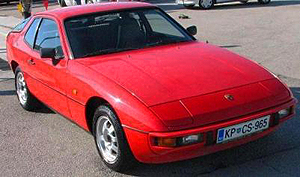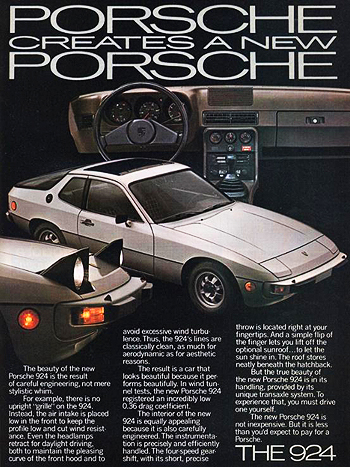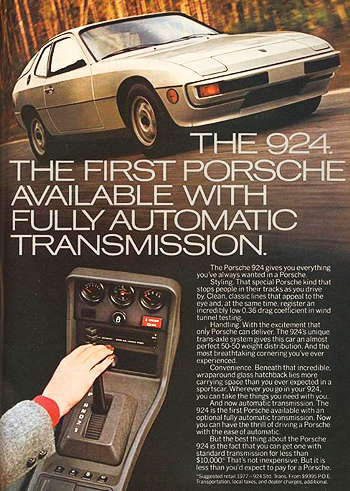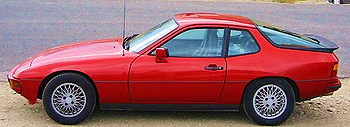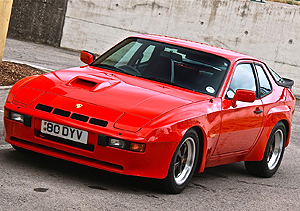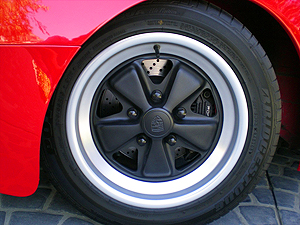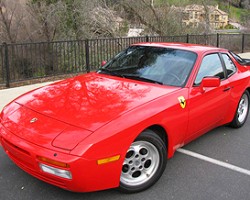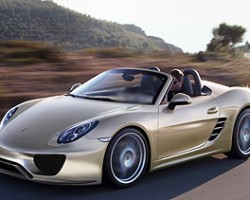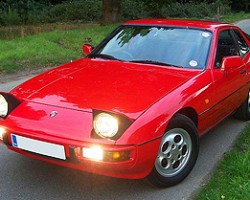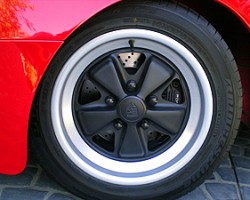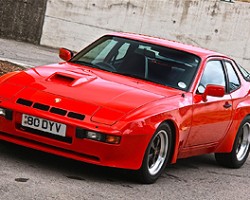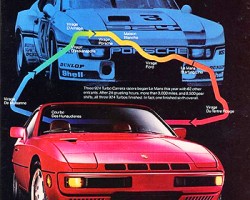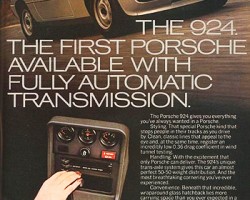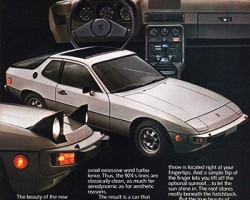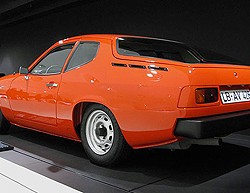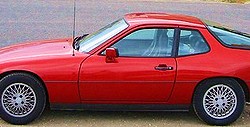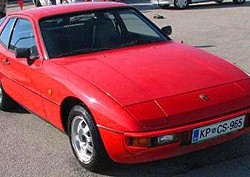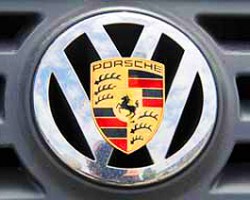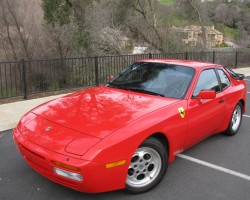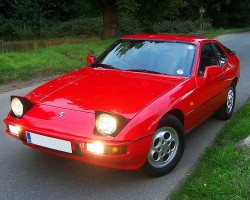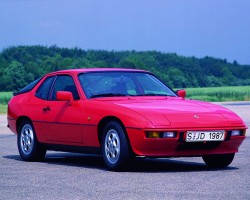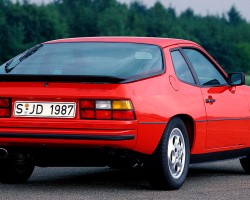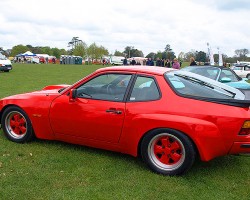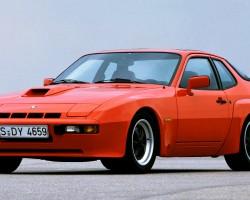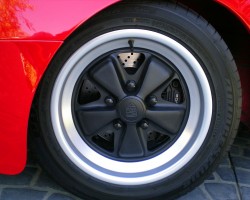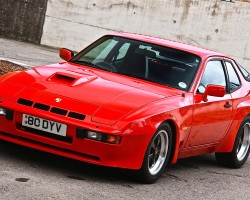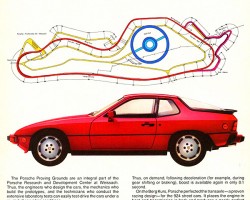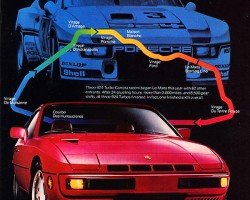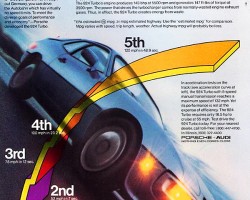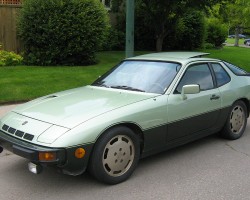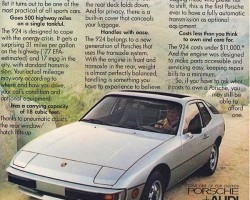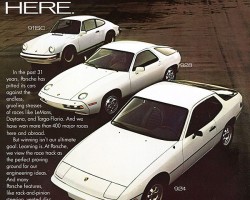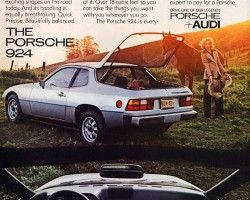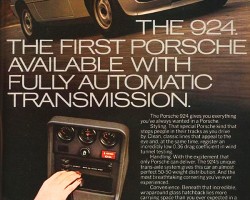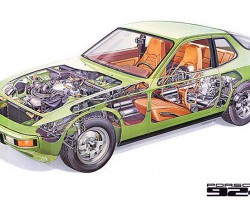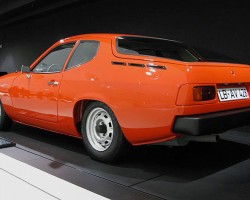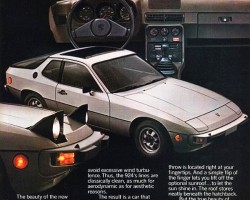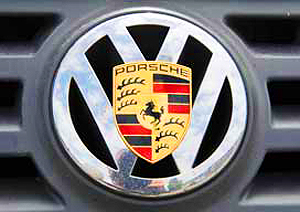
*Merger is a word which loosely describes the two companies’ situation. Initially, Porsche had attempted to purchase a majority amount of shares in Volkswagen. Their takeover backfired when the large amount of debt Porsche took on during their attempt weakened stock prices to the point where Volkswagen could afford to take them over.
In light of the fact many are bemoaning the merger* completion between Volkswagen and Porsche AG earlier this year, we feel it’s important to remember that a number of successful Porsche models over the years would not have existed without the help of Volkswagen. For starters, the original 1948 – 1965 Porsche 356 model made famous by James Dean was engineered by company founder Ferdinand Porsche, and based heavily on the Volkswagen Beetle’s rear-engine layout he himself created. The 1970 – 1976 rear-engined Porsche 914 was based almost solely on Volkswagen Karmann Ghia underpinnings. Within more recent years, the VW Touareg and Porsche Cayenne sport utility vehicles introduced for 2004 were developed from a joint venture between both companies. Under the skin, they are far more alike than they are different.
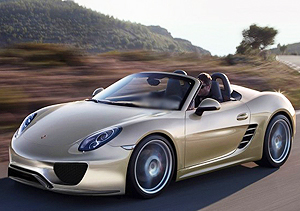
Today, Volkswagen’s ties with Porsche may result in an upcoming sub-Boxster 2-seat convertible based on a mid-engine Volkswagen model.
And today, Volkswagen is making fast steps in creating vehicle platforms that can be shared by future VW, Audi, and Porsche models. There’s talk of a compact sport utility for Porsche based on VW/Audi’s Q5 platform. And already greenlighted for production is a small convertible platform with two seats, a mid-engine layout designed for a 4-cylinder engine and rear-wheel-drive. It’s been reported Volkswagen’s version may be named the Bluesport and will focus on value with a price competitive with Mazda’s MX-5 Miata. Audi will dub their more upscale version the R4, give it styling based on recent E-Tron concept cars, and fit it between their TT and R8 models. Finally, Porsche will use the platform to create a model beneath the Boxtster in both size and price, most likely powered by a turbocharged 4-cylinder engine.
One cannot consider joint efforts between the two manufacturers without paying special tribute to the 1977 – 1988 Porsche 924, the company’s first offering that did not have an air-cooled engine mounted in the rear. While it was derided by fans of traditional Porsches when introduced, the 924’s sales success did more to help the company grow and ultimately become what it is today than any other models had up to that point. While early 924s may seem like lambs, they became truly respectable performance animals during the 1980s. The Porsche 944 of 1983 – 1991 was a 924 spinoff – basically the same car with flared fenders and more powerful engines.
The 924 began as a model Volkswagen created with the intention of selling a lightweight, front-engine sports coupe with rear-wheel-drive under its own badge, or its Audi division. However recession-weak currency values and the 1973 oil crisis convinced top management to abandon the project, because it was no longer possible to engineer this entirely new platform to a cost low enough to market as a VW. Porsche then purchased the project from VW, creating the final fastback/hatchback design while keeping as many existing VW / Audi parts as possible to ensure price points stayed as low as possible.
PART 1: 1977-79 IN THE UNITED STATES
The 1977 924 was introduced in the United States and elsewhere during the summer of ’76, and featured a 2.0-liter four cylinder Audi engine of 95 horsepower (Euro version of this engine made 125hp due to less restrictive emissions controls and exhaust systems). While the engine was up front, a four-speed manual transmission mounted within the rear axle housing was borrowed from the VW Beetle (known as a “transaxle”), rather than create a traditional one placed directly behind the engine. A side benefit that resulted from this layout was an almost even weight distribution of 52% front / 48% rear.
Because this setup required the .75-inch-thick driveshaft running from front to rear to spin at full engine speed, it was encased in a protective metal tube 3.3 inches in diameter. Unlike other rear-drive cars, the 924’s driveshaft was perfectly straight with no flex joints.
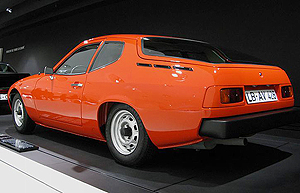
This early 924 prototype was developed in 1974. Today, it resides in Porsche’s factory museum in Germany. (Photo credit: Porsche Museum)
Suspensions consisted of front MacPherson struts introduced on ‘75 VW Rabbits, and rear trailing arms from VW Beetles. Brakes were initially 10-inch front discs and 9-inch rear drums lifted from European VW van models. Steering rack and links developed for the ’75 VW Scirocco were used as well. And rear axle shafts from VW “Thing” models had two constant velocity u-joints each to eliminate vibration. Initial curb weight was only 2,410 pounds – extremely light by today’s standards.
Early ‘77s suffered extreme wheel hop over bumps, a problem caused by the rear transaxle and driveshaft tube being mounted rigidly to the car’s frame. “1977 ½ “ models received liquid-filled rubber mounts to absorb the vibrations and resulted in huge improvements. These late ’77s also had a horsepower increase from 95 to 110 due to revised camshaft timing, larger intake valves, and higher cylinder compression ratios. A higher revving rear axle ratio helped improve 0-60 times from mid-12-second scores to mid-11s, and reduced quarter mile time from 18-second ranges to below 18 seconds. 91 octane unleaded gasoline was now required to avoid engine-knock and power loss. Auto reviewers were typiclly able to corner the car on a skidpad at around .82g – impressive, considering the only tire choice was tall-sidewall 185/70-14 radials.
Extra-cost options available from the start were air conditioning ($548), a removable sunroof panel ($330), front and rear anti-sway bars ($105), AM/FM stereo radio ($135), 14-inch aluminum wheels ($345), and metallic paint ($295). 4-wheel disc brakes became optional with a “924S” sport package for 1979. A five-speed manual transmission of Porsche’s own design later became optional on 1978 models, and standard on ’79s. Additionally, an Audi three-speed automatic was offered as an option ($400) late in the ’77 model year. Due to ballooning inflation rates in the United States during this time, 924 base prices jumped from $9,995 at introduction to over $14,000 by 1979. Engineers knew they had to increase the “entry level Porsche”s value content, and soon a 1980 924 Turbo would be introduced.
PART 2: 1980 – 1981 IN THE UNITED STATES
Because of mechanical developments benefitting 1980 and 1981 models, one could safely say these two model years represent the “middle” of the 924 production cycle – this article focuses on these two years in the United States. For 1980, A five-speed manual transmission of Porsche’s own design replaced the Audi five-speed unit on all 924s. An improved shift pattern now featured reverse to the right below fifth, instead of up and to the left above first. Fifth gear was now a true overdrive gear. And after listening to many a customer complaint about poor performance from rear drum brakes, Porsche made rear disc brakes standard on all 1981 models.
BASE 924
The non-turbo base engine was upgraded from 110 horsepower to 115, through higher compression ratios made possible by better emissions and fuel mixture control from a new three-way catalytic converter in the exhaust. Standard 924s had a 1980 base price of just under $16,000 (for comparison, a Mazda RX-7 started at $8,295 and the Nissan/Datsun 280ZX started at $9,899). Zero to sixty miles per hour was now achieved in 10.6 seconds with quarter-mile times of 17.6 seconds…about even with RX-7s and 280ZXs.
924 TURBO
The biggest news for the 1980 model year was the introduction of the 924 Turbo. The Audi 2.0-liter four cylinder base engine was beefed up with forged pistons, a cylinder head with larger exhaust valves, breakerless electronic ignition, two fuel pumps, and an oil cooler to offset higher temperatures generated by the turbocharger.
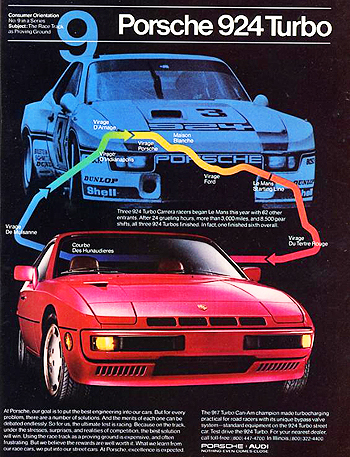
This 1981 924 Turbo ad allows a good view of the additional vents built in to the hood for better cooling.
The clutch, driveshaft, shock absorbers, and front anti-roll bar were also heavier duty to compensate for the turbo engine’s sixty-four extra pounds of weight. Larger front disc brakes were made larger to enhance stopping performance as well.
Turbos came standard with bigger 15-inch lace spoke aluminum wheels wearing 185/70-15 tires (see picture at top), and 16-inch wheels wearing 205/55-16 tires were optional with a Sport “S” package. Other than a standard three-spoke leather covered steering wheel, interiors were similar to base models.
A spoiler integrated with the rear glass piece reduced the measured coefficient of drag from .36 to .35 Cd, making the 924 Turbo the most aerodynamic 1980 car sold in the U.S. The engine’s 150 horsepower propelled the 2,565-pound car to sixty miles an hour in 7.5 seconds, and through the quarter mile in 16.0 seconds.
924 CARRERA GT
Produced in a limited run of 400 units for public sale during the 1981 model year, the 924 Carrera GT allowed Porsche to meet entry requirements into FIA Group 4 racing events. The Carrera GT featured a more powerful 210-horsepower version of the Audi turbo engine. Most extra equipment not involved with making the car move, turn, or stop faster was removed, and Carrera GTs weighed in at 330 pounds less than stock 924 Turbos.
Wheels from Porsche’s own 911 models were standard, and fender flare panels were added to improve aerodynamics. The Carrera look was so well received that Porsche integrated these visual cues to its 944 model introduced for 1983.
SPORT PACKAGE
Available both years, an optional Sport “S” package equipped 924s and 924 Turbos with rear disc brakes (1980), stiffer shock absorbers for less body roll, and added a rear anti-roll bar to complement the front one. Turbo “S” packages featured larger, ventilated disc brakes all around. While the option package caused some sticker shock with a price of nearly $2,000, Porsche did not seem to have trouble moving an abundance of cars so equipped.
After 1981, 924s were dropped from the U.S. lineup – replaced by a similar, further developed version of the platform known as the 944. However, the 924’s work was not done. By the mid-1980s a robust U.S. economy would lead to record demand for all Porsches and inspire the company to sell the 924 (still in its original 1977 body shell) as an entry-level model once more in the United States for 1987-88.
PART 3: 1987 – 88 IN THE UNITED STATES
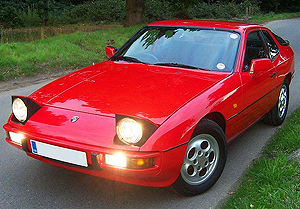
For 1987 and 1988, the 924 was brought back to the United States market and was dubbed the 924S. Beefed up brakes, suspension, and powertrain from Porsche’s more expensive 944 model made these the best performing 924 models.
When the Porsche 924 was introduced for 1977, it was a surprise in more ways than one. Being Porsche’s first front-engined, water-cooled engineering effort, it departed from their successful 911 formula. But it was also the first Porsche to be welcomed with less than total enthusiasm. It’s hard to say which of these two factors was more significant, but engineers truly believed rear-mounted, air-cooled 911s belonged to the past (along with VW Beetles) and they believed these new models were the future. Over the life of the 924, body panels changed very little. However, Porsche worked hard to improve shortcomings under the skin step by step, and the 924 remained a respectable sports car for its time through to the end of production in 1988.
Previously sold in the United States until 1981, a robust U.S. economy in the mid-‘80s would lead to record demand for all Porsches and inspire the company to sell the 924 (still in its original 1977 body shell) as an entry-level model once more for the 1987 and 1988 model years, slotting in below the similarly-engineered 944.
During the five model years it had remained on the market in Europe but been absent from our shores, sports car engineering and performance from Japanese makes had markedly improved. Because Porsche knew the 924 would compete with modern, aerodynamic designs such as the ’84 Nissan 300ZX, ’84 Mitsubishi Starion, ’86 Mazda RX-7, and ’86 ½ Toyota Supra, a great deal of engineering upgrades went into the 924 for ’87. For its last two years it was badged the “924S”, with the “S” signifying Porsche’s nomenclature of an upgraded version.
While the body was unchanged, the engine, drive train, brakes, suspension, and electrical system were now parts of Porsche’s own design taken from the 944 in place of VW and Audi parts originally used. A 2.5-liter single overhead cam four cylinder engine (based on one bank of the V8 engine from the 928) now produced 147 horsepower at 5,800 rpms – roughly even with the Turbo Audi engine introduced in 1980. Zero to sixty performance was just under 8 seconds, and quarter mile times were under 16 seconds.
A 1987 base price of $19,900 including air conditioning, power windows and mirrors put the 924S right in the ballpark with the above referenced cars from Japan. Some aluminum suspension parts from the 944 were cast out of steel for the 924S to keep costs down, but due to its slightly lighter weight overall, a 924S would outperform a 944 (non-turbo) by a slim margin. Aluminum “telephone-dial” fifteen-inch wheels were standard on 195/65-15 tires, and interiors were upgraded to exude a less Spartan appearance than earlier 924s. The Porsche five-speed manual transmission mounted in the rear axle assembly that first appeared in 1980 was retained, and a three-speed automatic was optional.

The 1983 – 1991 Porsche 944, and subsequent 1992-1995 Porsche 968 models were built off the same platform as the 924. As this 1986 944 Turbo shows, styling was clearly derivative.
While some collectors often seek earlier 924 Turbos and Carrera GTs, the 924S represents the best-developed and most modern of all 924s. Performance was the best, and superior driveability make them the easiest to live with on a real-world basis. Production of the 924S model ended at the end of 1988 world-wide, but its sister 944 lived on through 1991 – ultimately becoming the “968” of 1992-95. Porsche returned strictly to models with engines mounted behind the driver in 1996, with exception of the Cayenne sport-utility of 2004 and upcoming Panamera four-door sedan.
Because they are the only front-engine, four-cylinders Porsche has produced, they will undoubtedly increase in value and be solid investments for the future.
- The 1983 – 1991 Porsche 944, and subsequent 1992-1995 Porsche 968 models were built off the same platform as the 924. As this 1986 944 Turbo shows, styling was clearly derivative.
- Today, Volkswagen’s ties with Porsche may result in an upcoming sub-Boxster 2-seat convertible based on a mid-engine Volkswagen model.
- For 1987 and 1988, the 924 was brought back to the United States market and was dubbed the 924S. Beefed up brakes, suspension, and powertrain from Porsche’s more expensive 944 model made these the best performing 924 models.
- 924 Carrera GTs were equipped with these aluminum wheels from Porsche’s higher-price 911 model.
- A 1981 Porsche 924 Carrera GT
- This 1981 924 Turbo ad allows a good view of the additional vents built in to the hood for better cooling.
- A 3-speed automatic transmission became an option late in the 1977 model year.
- This advertisement introduces the 1977 Porsche 924 to the United States market.
- This early 924 prototype was developed in 1974. Today, it resides in Porsche’s factory museum in Germany. (Photo credit: Porsche Museum)
- This 1980 Porsche 924 Turbo shows 15-inch wheels and rear spoiler unique to this model.
- The ’77 Porsche 924 inspired imitations from Mazda, Nissan & others. (Photo credit: B. Myers)
- *Merger is a word which loosely describes the two companies’ situation. Initially, Porsche had attempted to purchase a majority amount of shares in Volkswagen. Their takeover backfired when the large amount of debt Porsche took on during their attempt weakened stock prices to the point where Volkswagen could afford to take them over.
- The 1983 – 1991 Porsche 944, and subsequent 1992-1995 Porsche 968 models were built off the same platform as the 924. As this 1986 944 Turbo shows, styling was clearly derivative.
- Porsche’s popular “phone dial” wheel designs equipped on 944 and 928 models were standard on all 1987 and 1988 924S models.
- While the body was unchanged on 1987-88 924S models, the engine, drive train, brakes, suspension, and electrical system were now parts of Porsche’s own design taken from the 944 in place of VW and Audi parts originally used.
- After being absent from the United States market for five model years, the 924 was brought back for the 1987 and 1988 model years.
- Here, an owner has customized the wheels on their 924 Carrera GT to color match the body.
- Add-on fender flairs differentiate ’81 924 Carrera GTs from standard Turbos. The Carrera look was so well received Porsche integrated these visual cues to its 944 model introduced for 1983.
- 924 Carrera GTs were equipped with these aluminum wheels from Porsche’s higher-price 911 model.
- The 1981 924 Carrera GT was a bare-bones, street-legal race car sold in limited numbers (400) to meet qualifications for production-class auto racing.
- This 1981 Porsche advertisement extolling the 924’s virtues shows a Turbo model.
- 1981 Porsche 924 Turbo advertisement.
- This 1980 Porsche 924 Turbo ad focuses on performance attributes in detail.
- For 1980, a Sport Package was introduced with 16-inch aluminum wheels and two-tone paint as seen on this 924 Turbo. Air intake slots directly above the front bumper and an air scoop on the passenger side of the hood differentiate all 1980-81 Turbos. (Photo credit: J. Armstrong)
- This 1978 Porsche 924 ad reminds potential buyers that it’s a good choice for the gas crunch, with 17 mpg city and 31 mpg highway.
- This 1978 Porsche advertisement shows the company’s entire lineup of models. The larger 928, introduced one year after the 924, also features the company’s new approach to water cooled front-engines with rear-mounted transaxles – but in more potent V8 form.
- This mid-season 1977 advertisement for the 924 highlights its exceptional amount of cargo space, and $9,995 price tag. Of course, the automatic transmission shown would add to that.
- This advertisement highlights the 3-speed automatic transmission that became an option late in the 1977 model year.
- This mechanical drawing shows the layout of Porsche’s first ever model with a front engine. Instead of being mounted behind the engine, the entire transmission was cleverly mounted over the rear axle for even weight distribution and balanced handling.
- This early 924 prototype was developed in 1974. Today, it resides in Porsche’s factory museum in Germany.
- This advertisement introduces the 1977 Porsche 924 to the United States market. Its hatchback design, pop-up headlights, and overall shape would inspire many imitations during the 1980s.

